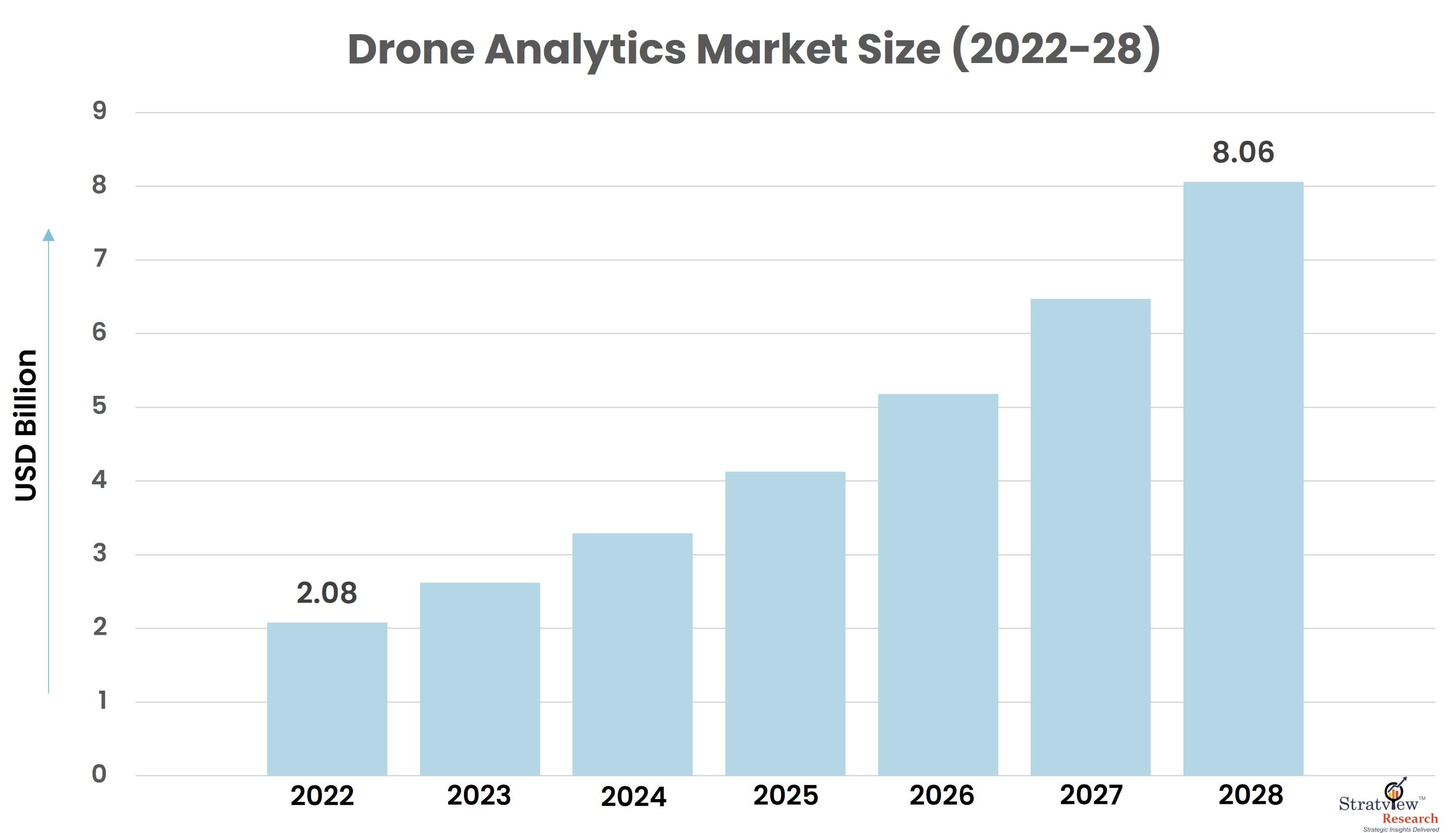Unlocking the Potential: The Rise of the Drone Analytics Market

The drone analytics market is experiencing rapid growth, driven by advancements in drone technology, artificial intelligence (AI), and data analytics. Drones, or unmanned aerial vehicles (UAVs), are no longer just tools for aerial photography or recreational use; they have evolved into powerful data collection devices capable of transforming industries through sophisticated analytics. This article explores the rise of the drone analytics market, highlighting its potential and key applications across various sectors.
According to Stratview Research, the drone analytics market was estimated at USD 2.08 billion in 2022 and is likely to grow at a CAGR of 25.2% during 2023-2028 to reach USD 8.06 billion in 2028.
The Power of Drone Analytics
Drone analytics refers to the process of using data collected by drones to generate actionable insights. Equipped with high-resolution cameras, sensors, and advanced software, drones can capture vast amounts of data from hard-to-reach areas quickly and efficiently. This data, when analyzed using AI and machine learning algorithms, can provide valuable insights that drive decision-making and improve operational efficiency.
Key Drivers of Market Growth
Technological Advancements
The rapid development of drone technology has been a significant driver of the drone analytics market. Modern drones are equipped with advanced sensors, including LiDAR, thermal imaging, and multispectral cameras, which enhance their data collection capabilities. Additionally, improvements in AI and machine learning have made it possible to process and analyze large datasets more effectively, unlocking new possibilities for drone analytics.
Cost Efficiency
Drones offer a cost-effective alternative to traditional data collection methods, such as manned aircraft and ground surveys. They can cover large areas in a short amount of time, reducing labor costs and operational downtime. As the technology becomes more affordable, more industries are adopting drones for their data collection needs, fueling the growth of the drone analytics market.
Regulatory Support
Governments and regulatory bodies worldwide are recognizing the potential of drones and are implementing frameworks to support their use. Regulations that ensure safe and responsible drone operations are encouraging more businesses to integrate drones into their operations, thereby boosting the demand for drone analytics.
Applications Across Industries
Agriculture
In agriculture, drone analytics is revolutionizing precision farming. Drones equipped with multispectral cameras can monitor crop health, assess soil conditions, and detect pest infestations. By analyzing this data, farmers can make informed decisions about irrigation, fertilization, and pest control, leading to increased crop yields and reduced resource wastage.
Construction and Infrastructure
In the construction and infrastructure sectors, drones are used for site surveys, progress monitoring, and inspections. Drone analytics provides accurate 3D models and maps of construction sites, helping project managers track progress, identify potential issues, and ensure compliance with safety regulations.
Environmental Monitoring
Drones are invaluable tools for environmental monitoring and conservation efforts. They can monitor wildlife populations, track deforestation, and assess the health of ecosystems. Drone analytics helps environmentalists and researchers make data-driven decisions to protect and preserve natural resources.
Energy and Utilities
The energy and utilities sector benefits from drone analytics in various ways, including inspecting power lines, pipelines, and wind turbines. Drones can quickly identify faults and damages, reducing the need for manual inspections and minimizing downtime.
Challenges and Future Outlook
While the drone analytics market holds immense potential, it also faces challenges such as data privacy concerns, regulatory hurdles, and the need for skilled personnel to operate drones and analyze data. However, ongoing advancements in technology and supportive regulatory environments are expected to address these challenges.
The future of the drone analytics market looks promising, with continued innovation driving its growth. As industries increasingly recognize the value of data-driven insights, the adoption of drone analytics is set to soar, unlocking new opportunities and transforming traditional practices.
In conclusion, the rise of the drone analytics market is a testament to the power of technology in driving efficiency and innovation across industries. By harnessing the potential of drones and advanced analytics, businesses can gain a competitive edge and make informed decisions that propel them towards success.
- Art
- Causes
- Crafts
- Dance
- Drinks
- Film
- Fitness
- Food
- Games
- Gardening
- Health
- Home
- Literature
- Music
- Networking
- Other
- Party
- Religion
- Shopping
- Sports
- Theater
- Wellness




